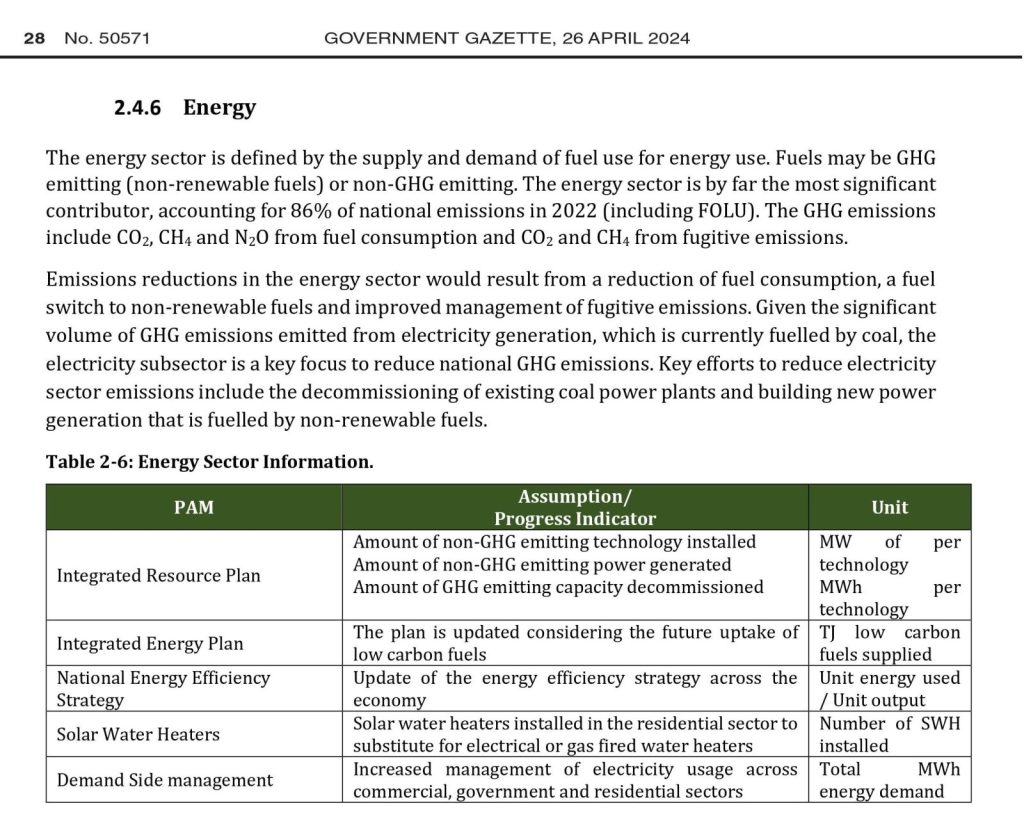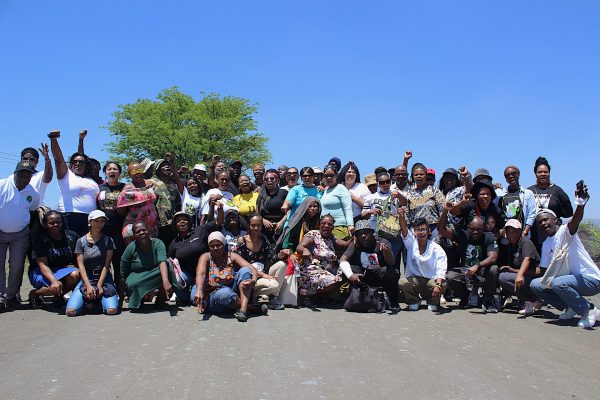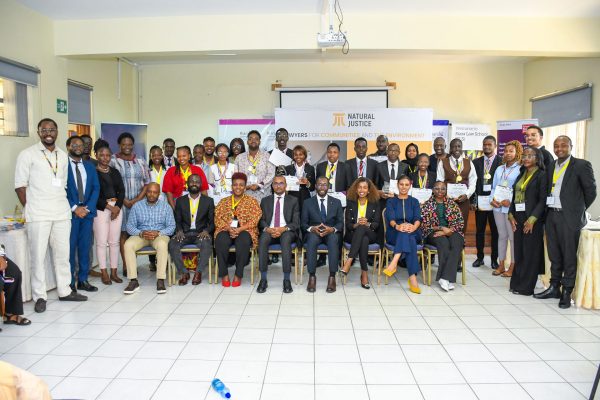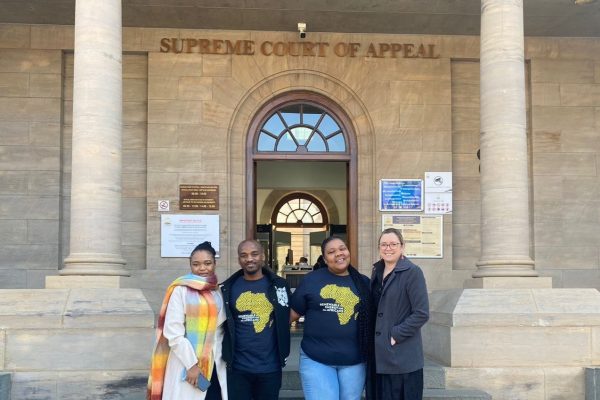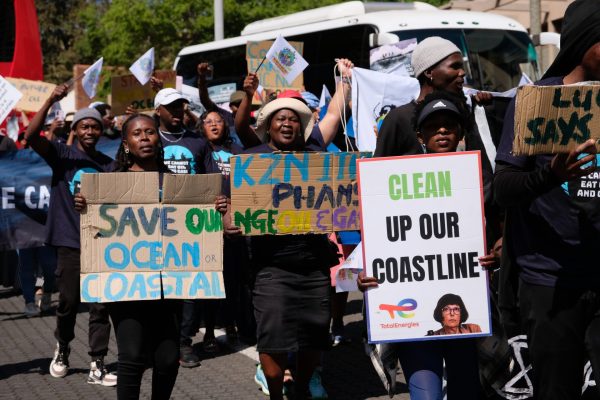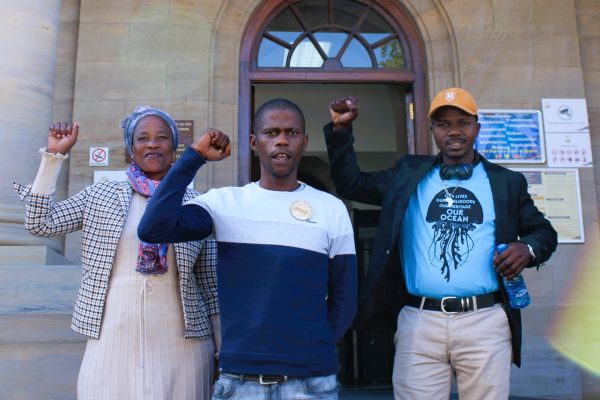As the global community intensifies efforts to combat climate change, aligning sectoral development with the Paris Agreement’s greenhouse gas emissions reduction objectives has become paramount. This involves considering the sectors of economic activity in a country which contribute to greenhouse gas emissions; the main ones usually being energy, transport and agriculture.
In South Africa, with its dependency on coal-fired power stations, the energy sector contributes 78% of total emissions. This is according to the 9th inventory on climate emissions. The second-largest emitter is the agricultural sector, (11%), Industrial Processes and Product Use (IPPU) (6%) and the Waste sector (4 %).
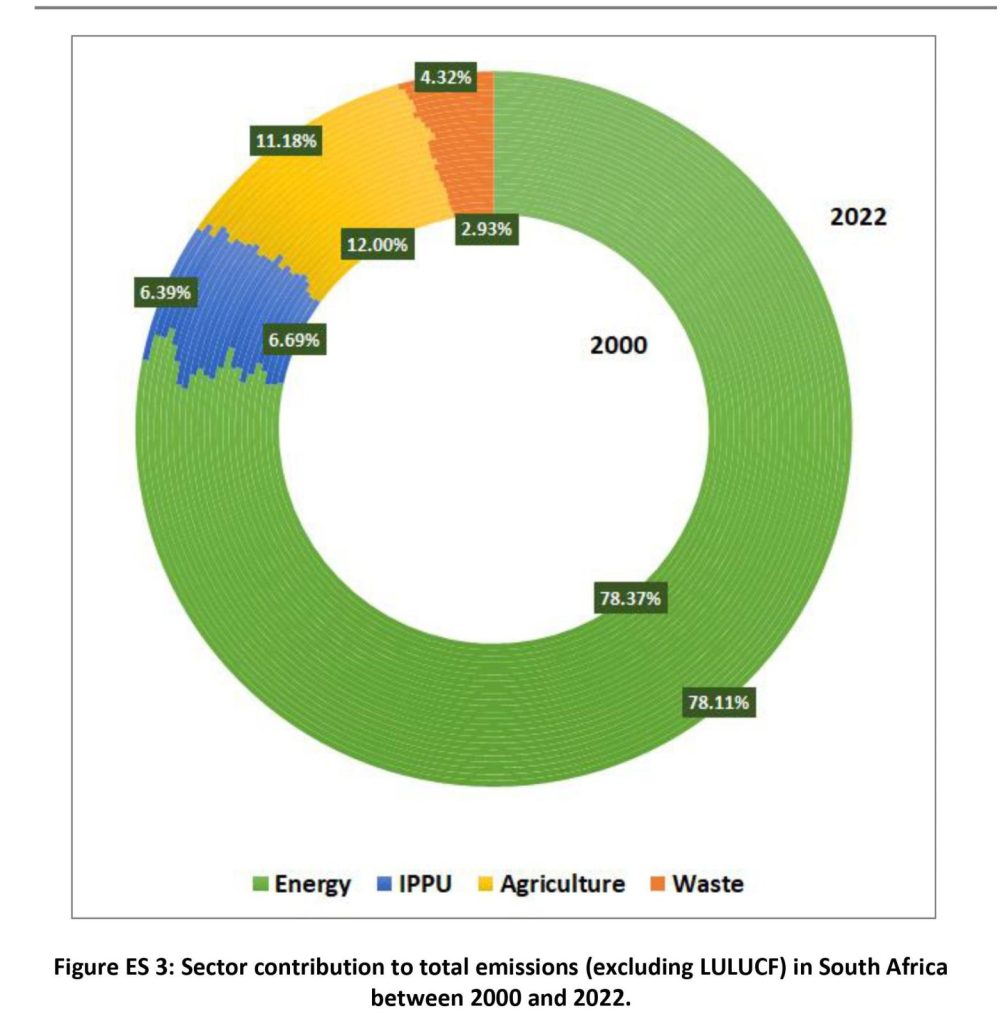
Natural Justice and the Centre for Environmental Rights recently commented on the Draft Sectoral Emission Targets Report published by the Department of Forestry, Fisheries and Environment (DFFE). Our submission offers critical insights into how South Africa can integrate sectoral emissions targets (SETs) within its overarching climate framework.
South Africa is the world’s 17th largest emitter of greenhouse gases (GHG), contributing 1.07% to the global total. Reducing emissions in the Energy and Agricultural sectors will require a range of interventions, and interventions in IPPU and waste is also needed. How can South Africa do this while protecting jobs and sustaining livelihoods.
To achieve this, the country needs a comprehensive strategy. Some of these may look like:
- Switching to Renewable Energy: Gradually replace coal, gas and other fossil fuels with solar, wind, and hydroelectric power. This will reduce emissions and create new jobs in the renewable energy sector. As you can see below, coal is still the predominant source of energy, and this needs to change rapidly.
- Improving Energy Efficiency: Enhancing energy efficiency across all sectors by upgrading infrastructure, adopting energy-saving technologies, and promoting energy conservation. This reduces emissions and saves costs.
- Supporting Green Jobs: Investing in programmes that retrain workers who will be required to transition from traditional energy and industrial jobs to green economy roles, fostering economic growth in new sectors.
- Promoting Sustainable Agriculture: Encouraging sustainable farming techniques like precision farming and organic fertilizers to reduce emissions and boost productivity, ensuring food security.
- Developing a Circular Economy: Increasing recycling and waste management efforts to cut emissions from the waste sector and create jobs in these industries.
- Implementing Strong Policies: Establishing clear emission reduction targets, providing incentives for green technologies, and enforcing environmental standards to support the low-carbon transition.
- Seeking International Support: Collaborating globally and seeking financial aid for climate initiatives to access resources needed for a smooth transition and mitigate economic impacts.
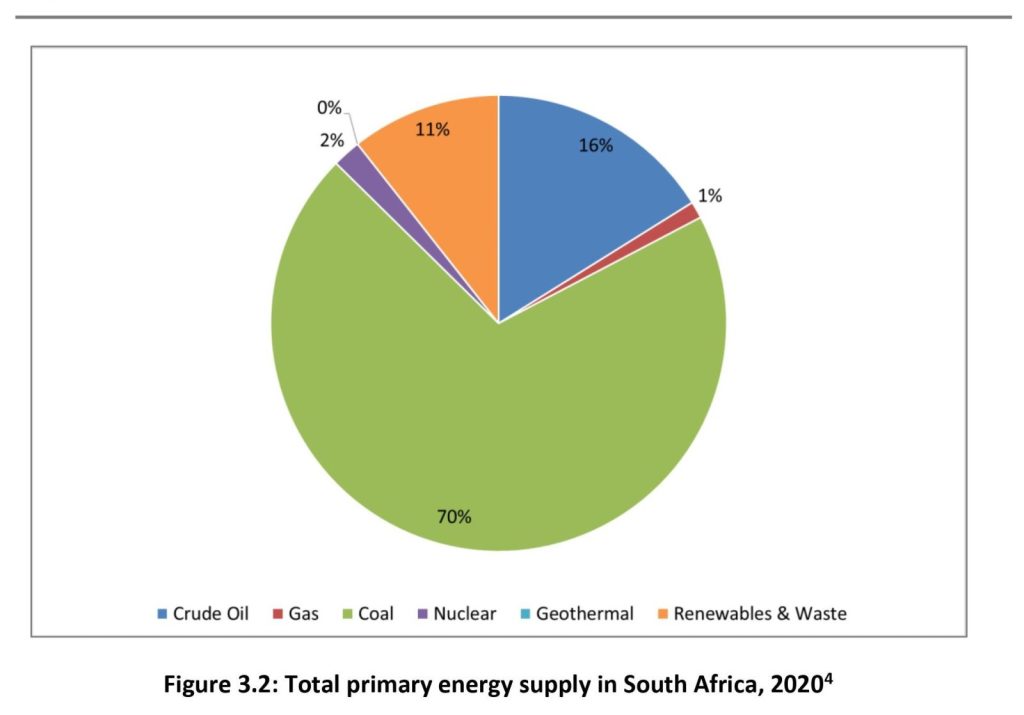
In the submission to the DFFE, Natural Justice and the Centre for Environmental Rights raised the following recommendations.
The Integration of Socio-Economic Considerations:
The joint submission emphasizes the importance of considering socio-economic impacts when setting sectoral emission targets. The interventions used to reduce carbon emissions may impact jobs, for example. Other issues to consider are safeguarding lives and infrastructure from extreme weather events like flooding and fires, preventing climate-induced health issues such as heat waves and malaria, and ensuring water availability for agricultural productivity, among other factors.
The submission emphasizes that the Minister must rely on the best available science and evidence. This approach ensures that climate policies do not disproportionately impact vulnerable communities and aligns with broader development goals of poverty eradication and inequality reduction.
Regular Review and Revision of SETs:
It is crucial for citizens to stay actively engaged and hold the government accountable by demanding regular reviews and revisions of sectoral emission targets in a transparent manner. This includes ensuring that reviews occur every five years, incorporating monitoring and evaluation results, technological advancements, and international commitments to keep policies relevant and effective.
Transparency and Public Participation:
Transparency is highlighted as a critical component of climate governance. The joint submission calls for the full disclosure of all processes and discussions that inform the SETs. Diverse perspectives must be considered, leading to more robust policy outcomes and empowering all citizens to exercise their civil rights by voicing their perspectives.
Alignment with Long-Term Low Emission Development Strategies:
Of course, the goal of SET emission reduction targets is to bring South Africa closer to net zero – and the date by which this must happen is 2050. The joint submission suggests that these targets should be informed by the South African Low Emission Development Strategy (LEDs) 2050 – and they should be ambitious.
If South Africa fails to impose sufficiently ambitious 2030 SETs, particularly in the electricity sector on which other sectors depend for rapid decarbonization, then South Africa will face significant hurdles in achieving a timely clean energy transition based on the LEDs.
Equitable Allocation of Emission Reductions:
The joint submission stresses the need for an equitable approach in the allocation of SETs, recognizing that some sectors (and their sub-sectors) are harder to implement interventions in than others – and that some interventions have real-life consequences for people. For instance, the electricity sector can more readily transition to renewable energy compared to sectors like heavy industry, which South Africa relies on for jobs and income from exports.
South Africa stands at a critical juncture, balancing the imperative of economic growth with the urgent need to mitigate climate change. The consequence of these recommendations means that government must be involved in strategic long-term planning, while considering the voices of all South Africans. It may require the entire transformation of certain sectors – especially energy and agriculture. However, there will be a balancing act needed to safeguard jobs and livelihoods. Ultimately, South Africa’s success in addressing climate change hinges on its ability to foster a just transition that prioritizes economic growth, social equity, and environmental protection.
